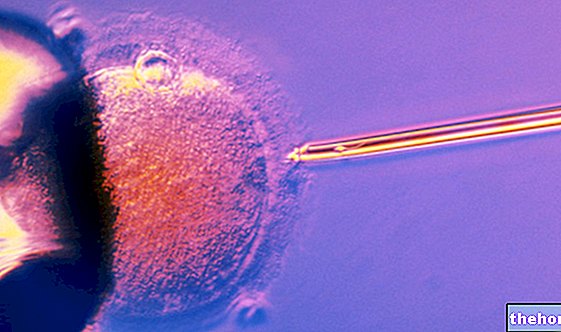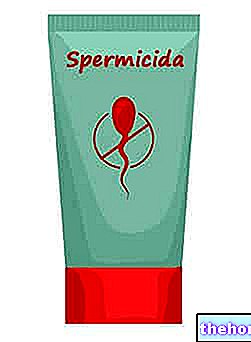by Fabìola Marelli
In Osteopathy we are generally led to classify prenatal trauma as a high impact physical-body shock.
Since in the fetus the emotional and cognitive abilities are not as developed as the sensitive ones, it is at the level of the primitive brain that it is able to recognize and distinguish the different types of energy that surround it.

In him (it?) the sympathetic branch of the autonomic nervous system (excitability) is more represented and the parasympathetic one (tranquility) is less.
The level of physical arousal is so high that it cannot be managed.
It is "as if his primitive brain, with all the wisdom of a billion years of evolution, was fragmenting itself in an attempt to manage the discomfort.
If a mother does not want the baby, the wall of the uterus will not be favorable for the fetus, which will begin to disorganize itself by trying to get away from that wall, which has become an enemy, and will tighten the area of the umbilical cord in order to exclude the "energy of that reluctant mother, or any other energy or substance that it does not want.
If a mother does not want the baby she will try to avoid even feeling, and the fetus will perceive it: communication is in the realm of sensitivity.
It is a sensitive communication that takes into account telepathic, physical, biochemical and tissue aspects.
On the other hand, what do we do when we want to forget the pain in a certain part of the body, or we don't want to feel a certain part of the body?
Can I get away from the mother who causes me anxiety? Unfortunately no.
The fetus is fully integrated into the mother's energy system, totally dependent on it. But nevertheless, he tries.
Mother and "child" at that stage are one, so the fetus that tries to get away from the mother actually tries to get away from itself as well.
The only way to survive is to go deeper and deeper into its core.
As an adult he will assume what has been defined mental existential structure (see Lisbeth Marcher), that is, he will be an extremely intellectual, cerebral person, with a "distracted" look, the "no-man's child" aspect and difficulty in managing feelings. and vision disturbances corrected by lenses, while during palpation we may find dysfunction in the abdominal region.
If, on the other hand, the fetus feels wanted but the mother experiences intense stress during pregnancy, then it will close in on an emotional defense.
It is a different survival strategy, which is called emotional existential structure.
The fetus can therefore misunderstand, misunderstand events to the point of having the perception of an attack on its life, develop the feeling of not having been desired, become an adult with an emotional existential structure that will make it sensitive, deep in feelings, but with the feeling that the world, people and animals can disappear from his life at any moment.
Another symptom of prenatal trauma is the anxiety that is unleashed when unexpectedly we are faced with something new, good or bad.
When you get good news how do you feel? Excited.
When you get bad news how do you feel? Excited.
The stimulation reaches the primitive brain which wonders where the danger is coming from.
That's why you can't concentrate or focus attention on what you are doing: the primitive brain has gone "knocking" on prenatal anxiety and is telling you that the danger is somewhere else. And "that feeling that usually makes you say" today I feel anxious "and that makes you feel relief and at the same time absolves you even if you have been inconclusive all day.
And "the" anxiety about death.
It is not an "emotional anxiety.
It is "a" anxiety that comes from the primitive core. Anything that doesn't come from a recent brain thought comes from this very early experience.
It is the primitive part of the brain that can afford to continue looking for danger thanks to the flexibility with which the autonomic nervous system copes with various levels of energy or excitement.
A traumatized physiology is always the effect of an early hyperstimulation that could not be managed.
The primitive brain that governs all autonomic processes (NdA: of the autonomic nervous system), damaged by the trauma, is no longer able to return to homeostasis due to the gain of energy confiscated by the SNA, which, despite trying to disorganize to defend itself, is no longer able to return to the status quo ante.
Do you know why you always feel excited at the idea of going to the beach or to the mountains and stopping?
Because the rhythm of the sea and the breath of the mountain are so overwhelming that the mechanism that makes us resist self-control is pushed by the natural rhythm and begins to regulate itself.
In trauma, all connections are broken.
The child to come is in a world, the womb, in which there is an absence of temporal and spatial logic.
It is in a place of infinite creativity, which was also yours and my creativity.
In trauma it is this connection to creativity that is broken.
In the healing process, at the primitive level of the reptiles, there is no logic.
Osteopatic prenatal care, the osteopathic treatment for prenatal trauma, is to dialogue through tactile stimulation with the tissues or, even better, with the emotional skin of our pregnant patient, with the aim of establishing a connection with her creative and physiological resources. so that no trace of trauma remains in the child to come.
Fabìola Marelli - Osteopath D.O.
I registered at the Osteopaths Registry of Italy - n ° 268 and at the ASL of Como. She works as a freelance professional and researcher. Lecturer and master's speaker. Author of texts and treatises relating to Music and Osteopathy.
Administrator and teacher of the CRESO School of Osteopathy - Center for Osteopathic Research and Studies S.r.l. (www.cresonline.it)
Director of the publishing house CRESO Editions.




























